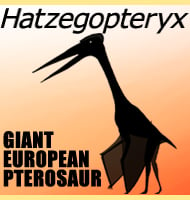In Depth
Didelphodon acquired its name because of its similar dentition to a modern day opossum, which in turn has indicated a matching diet of insects and small animals. Its body morphology also suggests adaptation for burrowing, a good survival tactic when you consider the predatory dinosaurs of its time. As an ancient marsupial, Didelphodon is thought to represent an ancient ancestor to the opossums that live in North America today.
Further Reading
– A new species of Didelphodon Marsh (Marsupialia) from the Upper Cretaceous of Alberta, Canada: paleobiology and phylogeny. – Neues Jahrbuch f�r Geologie und Pal�ontologie, Abhandlungen 172(3):357-380. – R. C. Fox & B. G. Naylor – 1986. – Stagodontid marsupials from the Late Cretaceous of Canada and their systematic and functional implications. – Acta Palaeontologica Polonica. 51 (6): 13–36. – R. C. Fox & B. G. Naylor – 2006. – A large carnivorous mammal from the Late Cretaceous and the North American origin of marsupials. – Nature Communications. 7: 13734. – Gregory P. Wilson, Eric G. Ekdale, John W. Hoganson, Jonathan J. Calede &Abby Vander Linden – 2016.










